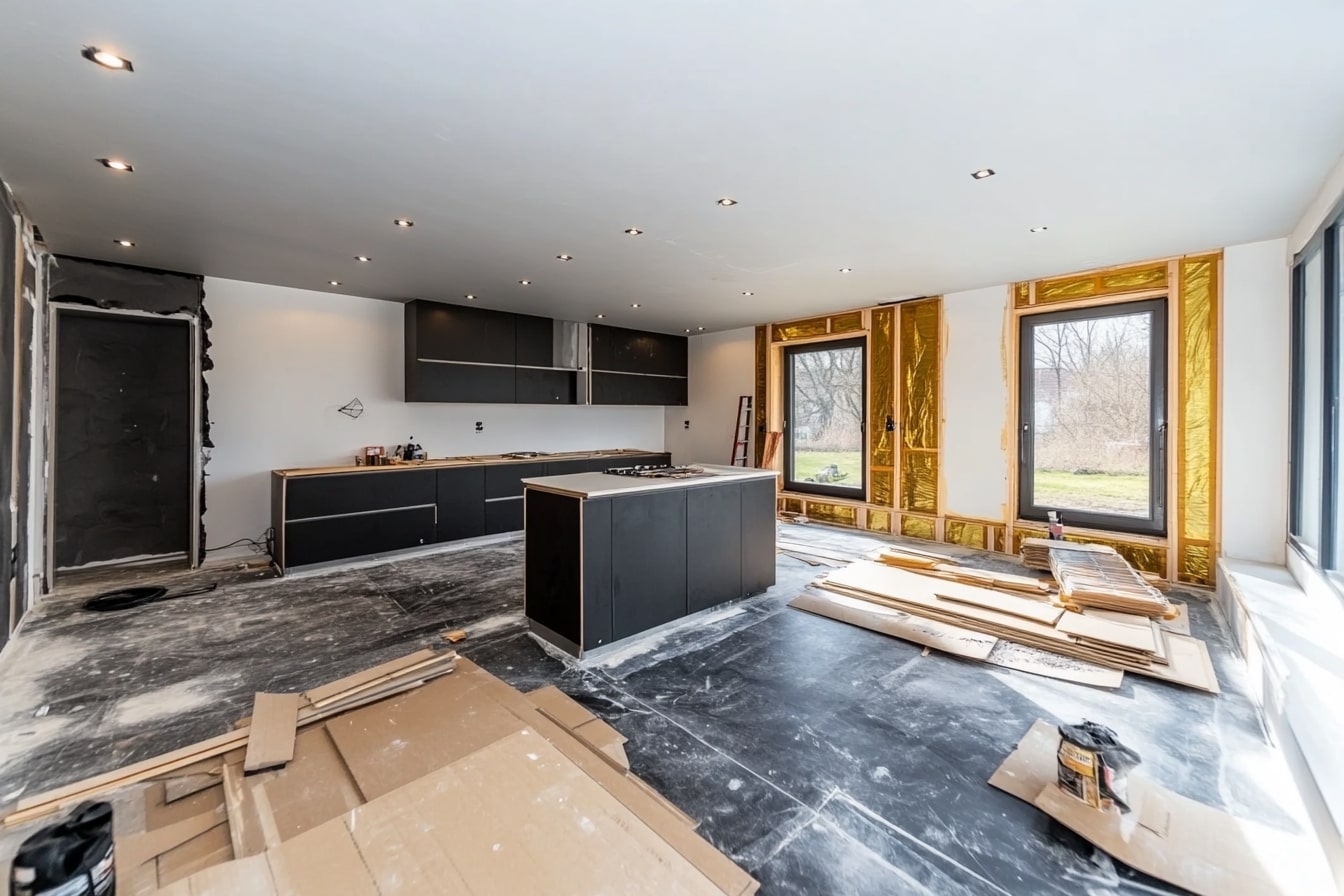Understanding the Key Factors in Home Renovation Costs and Planning
Home renovation projects can transform living spaces but require careful planning and budgeting. From structural modifications requiring permits to seasonal considerations affecting material durability, understanding the various elements that influence renovation costs is essential for homeowners embarking on improvement projects. This guide explores the critical factors that determine renovation expenses and provides practical insights for planning successful home improvements.

Home renovation projects represent significant investments that can enhance both the functionality and value of your property. Whether you’re considering a kitchen remodel, bathroom upgrade, or a complete structural overhaul, understanding the various factors that influence costs and planning requirements is crucial for project success. From obtaining necessary permits to choosing between interior and exterior improvements, each decision impacts your renovation timeline, budget, and overall satisfaction with the results.
What Influences Home Improvement Costs?
The cost of home improvements varies widely based on several key factors. Material selection often accounts for 40-50% of project expenses, with premium options like natural stone, hardwood, and custom cabinetry commanding significantly higher prices than standard alternatives. Labour costs typically represent 30-35% of the budget and fluctuate based on project complexity and regional wage differences.
Project scope dramatically affects overall expenses. Structural modifications involving load-bearing walls or foundation work require engineering expertise and specialized equipment, increasing costs substantially. Similarly, renovations requiring extensive plumbing or electrical system updates often encounter unforeseen complications within existing infrastructure, leading to budget adjustments.
Property location also plays a crucial role in determining renovation expenses. Urban areas generally command higher labour rates than rural regions, while local building codes and regulations may necessitate specific materials or construction methods that impact costs. Additionally, homes in historic districts often face strict renovation guidelines that can increase project complexity and expenses.
Permits Needed for Structural & Aesthetic Changes
Navigating the permit landscape is essential for legal home improvements. Structural modifications almost always require permits, including removing or altering load-bearing walls, adding rooms, changing roof structures, or modifying foundations. These permits ensure changes meet building codes and safety standards, with inspections occurring at various project stages.
Aesthetic changes have varying permit requirements. While interior decorating projects like painting or installing new flooring typically don’t require permits, changes affecting external appearance might need approval, especially in conservation areas or listed buildings. Window replacements, siding changes, and significant landscaping may require permits depending on local regulations.
The permit application process involves submitting detailed plans, paying fees (typically £100-500 depending on project scope), and scheduling inspections. Failing to obtain necessary permits can result in work stoppages, fines, complications during property sales, and potential requirements to remove non-compliant renovations. Working with contractors familiar with local building departments can streamline this process considerably.
Compare Cost for Home Improvement
Home improvement costs vary significantly across different project types, with kitchen and bathroom renovations typically commanding the highest per-square-foot expenses. Understanding typical cost ranges helps homeowners budget appropriately and evaluate contractor quotes effectively.
| Project Type | Average Cost Range | Factors Affecting Cost |
|---|---|---|
| Kitchen Renovation | £5,000 - £35,000 | Cabinet quality, appliance grade, countertop material |
| Bathroom Remodel | £3,000 - £15,000 | Fixture quality, tile selection, layout changes |
| Room Addition | £15,000 - £45,000 | Size, foundation requirements, interior finishes |
| Loft Conversion | £20,000 - £60,000 | Existing structure, dormer additions, staircase requirements |
| Exterior Painting | £1,500 - £5,000 | Home size, surface preparation, paint quality |
Prices, rates, or cost estimates mentioned in this article are based on the latest available information but may change over time. Independent research is advised before making financial decisions.
When comparing renovation costs, obtaining multiple detailed quotes from reputable contractors provides the most accurate project assessment. These quotes should itemize materials, labour, permit fees, and contingency funds. While the lowest bid may seem attractive, it often excludes important elements that higher-priced competitors include. Thoroughly reviewing quote details helps identify these discrepancies and prevents unexpected expenses during project execution.
Interior vs. Exterior Home Projects
Interior and exterior renovations offer different benefits and challenges for homeowners. Interior projects typically focus on improving functionality and comfort, with kitchen and bathroom renovations consistently delivering the highest return on investment (approximately 70-80%). These projects can be completed year-round regardless of weather conditions, offering greater scheduling flexibility.
Exterior renovations enhance curb appeal and structural integrity while protecting against environmental damage. Projects like roof replacements, siding updates, and window installations directly impact energy efficiency and home protection. However, these renovations are more weather-dependent, often requiring scheduling during specific seasons for optimal results.
Budget allocation between interior and exterior projects should reflect property needs rather than personal preferences alone. Neglecting exterior maintenance in favor of interior aesthetics can lead to structural issues that ultimately cost more to repair. Conversely, focusing exclusively on exterior improvements while ignoring outdated interior systems may result in functional deficiencies that diminish daily living quality.
Seasonal Timing and Material Lifespan
Strategic seasonal planning can significantly impact renovation costs and outcomes. Summer typically sees peak demand for contractors, resulting in higher labour costs and extended project timelines. Winter offers greater contractor availability and potential discounts, particularly for interior projects, though exterior work may face weather-related challenges.
Material selection should consider climate conditions and expected lifespan. In regions with significant temperature fluctuations, exterior materials must withstand expansion and contraction. Vinyl siding typically lasts 20-40 years, while fiber cement options can exceed 50 years with proper maintenance. Roofing materials vary dramatically in longevity, from 15-20 years for standard asphalt shingles to 50+ years for metal, slate, or clay tile options.
Proper installation significantly affects material performance regardless of quality. Professional installation following manufacturer specifications ensures materials reach their expected lifespan and maintain warranty coverage. This consideration is particularly important for weather-exposed elements like roofing, windows, and exterior finishes, where improper installation can lead to premature failure and costly repairs.
Understanding these various factors that influence home renovation costs, requirements, and outcomes helps homeowners make informed decisions when planning improvement projects. By carefully considering permits, comparing costs, evaluating interior versus exterior needs, and planning for seasonal timing, you can maximize your renovation investment while creating spaces that enhance both daily living and long-term property value.




